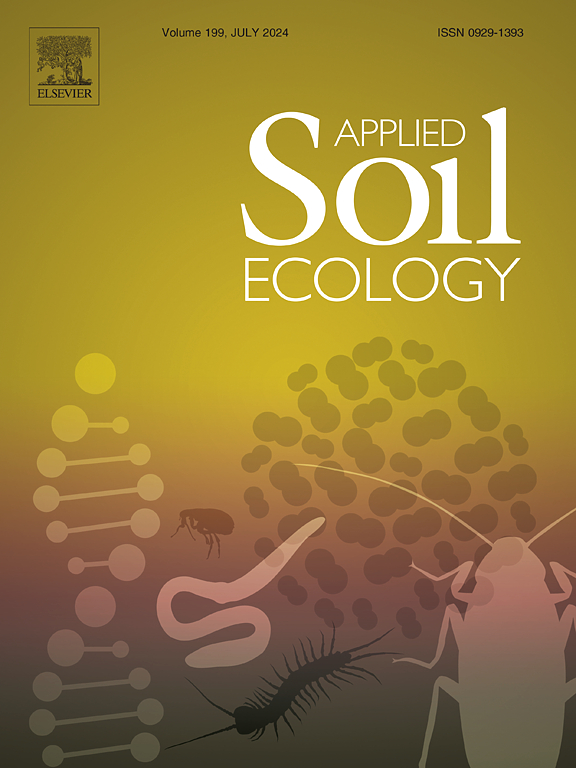Soil macrofauna communities vary by land use type and environmental conditions in the Serengeti-Mara ecosystem
IF 4.8
2区 农林科学
Q1 SOIL SCIENCE
引用次数: 0
Abstract
Soil macrofauna are useful indicators of soil health given their low resistance to environmental stressors. The magnitude of such stressors varies by land use type and environmental conditions. Despite their ecological importance, soil macrofauna remain understudied in the Eastern Afrotropics. The greater Serengeti-Mara ecosystem (GSME) holds high conservation value and is experiencing acute environmental strain. Our study surveyed soil macrofauna communities across four habitat types: bush/forest, grassland, human use, and wetlands following the Tropical Soil Biology & Fertility (TSBF) sampling protocol. We discuss the community structure and dynamics of ants (Hymenoptera: Formicidae), termites (Insecta: Isoptera), and earthworms (Annelida: Oligochaeta) due to their relative abundance and biomass in soil communities and for their role as ecosystem service providers. Redundancy analysis (RDA) revealed the partitioning of habitat types by relative water resource availability as quantified by distance to water (m), litter water content (%), and litter mass (g m−2). Water limitation increased between bush/forest, grassland, and human use habitats, respectively. The spatial patterning of habitat diversity and soil macrofauna communities alike are similarly linked to local moisture availability in the study region. Ants were observed at higher abundances than termites or earthworms throughout the study system and especially within relatively water resource-limited grassland and human-use study areas. By contrast, earthworms were observed most frequently and at higher relative abundances in bush/forest and wetland habitats. Termite abundances were low for nearly every study site. These patterns emphasize the degree to which landscape-scale heterogeneity plays a role in the spatial patterning of soil macrofauna communities in a semi-arid tropical landscape.
求助全文
约1分钟内获得全文
求助全文
来源期刊

Applied Soil Ecology
农林科学-土壤科学
CiteScore
9.70
自引率
4.20%
发文量
363
审稿时长
5.3 months
期刊介绍:
Applied Soil Ecology addresses the role of soil organisms and their interactions in relation to: sustainability and productivity, nutrient cycling and other soil processes, the maintenance of soil functions, the impact of human activities on soil ecosystems and bio(techno)logical control of soil-inhabiting pests, diseases and weeds.
 求助内容:
求助内容: 应助结果提醒方式:
应助结果提醒方式:


